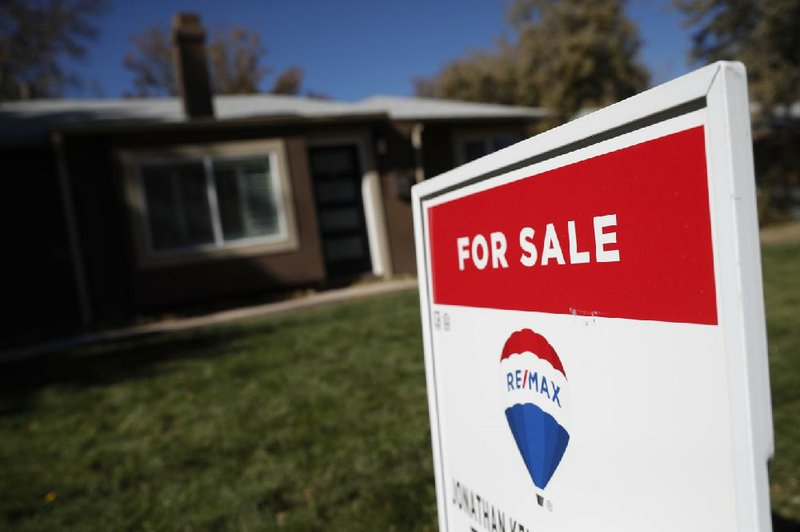WASHINGTON -- U.S. home sales retreated 1.3% in January from the month before, but low mortgage rates helped enable an increase in purchases from a year ago.
The National Association of Realtors said Friday that sales of existing homes slipped last month to a seasonally adjusted annual rate of 5.46 million. Sales have climbed 9.6% over the past 12 months as borrowing costs have fallen. But sales could be squeezed in the coming months because of a shortage of homes listed for sale.
While the data showed a slight slowdown in sales for the month, the rate remains near December's level, which was the best in almost two years. Those levels underscore how the housing market has stabilized after emerging last year from a long slump.
Just 1.42 million homes were on the market at the end of January, a 10.7% decline from a year ago. With fewer homes for sale, would-be buyers have fewer options and prices are rising faster than wage growth.
At the current pace, it would take 3.1 months to sell all the homes on the market, compared with 3 months in December, the lowest in more than two decades of data. Real estate agents see anything below five months of supply as a sign of a tight market.
"If you look at December and January together, the housing market is doing quite well in terms of sales, but still being constrained by an inventory shortage pushing up prices too fast," Lawrence Yun, the association's chief economist, said at a briefing in Washington.
The median sales price in January was $266,300, up 6.8% from a year ago.
Regional readings were mixed. Sales in the West fell 9.4% from the previous month amid affordability challenges. The Midwest and South saw modest gains while the Northeast was unchanged.
First-time buyers made up 32% of sales, up slightly from 31% the previous month.
Existing-home sales account for about 90% of U.S. housing and are calculated when a contract closes. New-home sales, which make up the remainder, are counted when contracts are signed, and those numbers will be released Wednesday.
A solid economy and low mortgage rates are increasing demand for housing. Workers have an increased sense of security with the unemployment rate hovering near a half-century low at 3.6%.
Meanwhile, the 30-year fixed-rate average ticked up to 3.49% with an average 0.7 point this week, according to mortgage buyer Freddie Mac. (Points are fees paid to a lender equal to 1% of the loan amount and are in addition to the interest rate.)
The average interest rate was 3.47% a week ago and 4.35% a year ago. The 30-year fixed-rate average has remained below 3.5% for three weeks in a row.
The 15-year fixed-rate average was slightly higher at 2.99% with an average 0.8 point. It was 2.97% a week ago and 3.78% a year ago. The five-year adjustable-rate average slipped to 3.25% with an average 0.2 point. It was 3.28% a week ago and 3.84% a year ago.
Recent favorable economic data has done little to move rates. The consumer price index and producer price index were better than expected. Although housing starts fell, building permits were near a 13-year high.
"January's decrease in single-family home construction came on the heels of a strong December that was helped by warmer weather," said Bill Banfield, executive vice president of capital markets at Quicken Loans. "With two strong months, it is clear warmer weather has helped the housing market earn some extra-credit points. This could help generate positive momentum heading into the spring home-buying season."
Such good economic news normally would send mortgage rates higher, but investors remain concerned about the effect the coronavirus outbreak will have on the economy.
"The coronavirus and its impact have yet to be felt to its fullest extent -- although Apple warned that it will have an impact on its numbers," said Jim Sahnger, mortgage planner with C2 Financial in Jupiter, Fla. "Until we see how that plays out, rates should remain stable. Absent the virus right now, rates would be climbing."
Information for this article was contributed by Josh Boak of The Associated Press, by Reade Pickert of Bloomberg News and by Kathy Orton of The Washington Post.
Business on 02/22/2020

